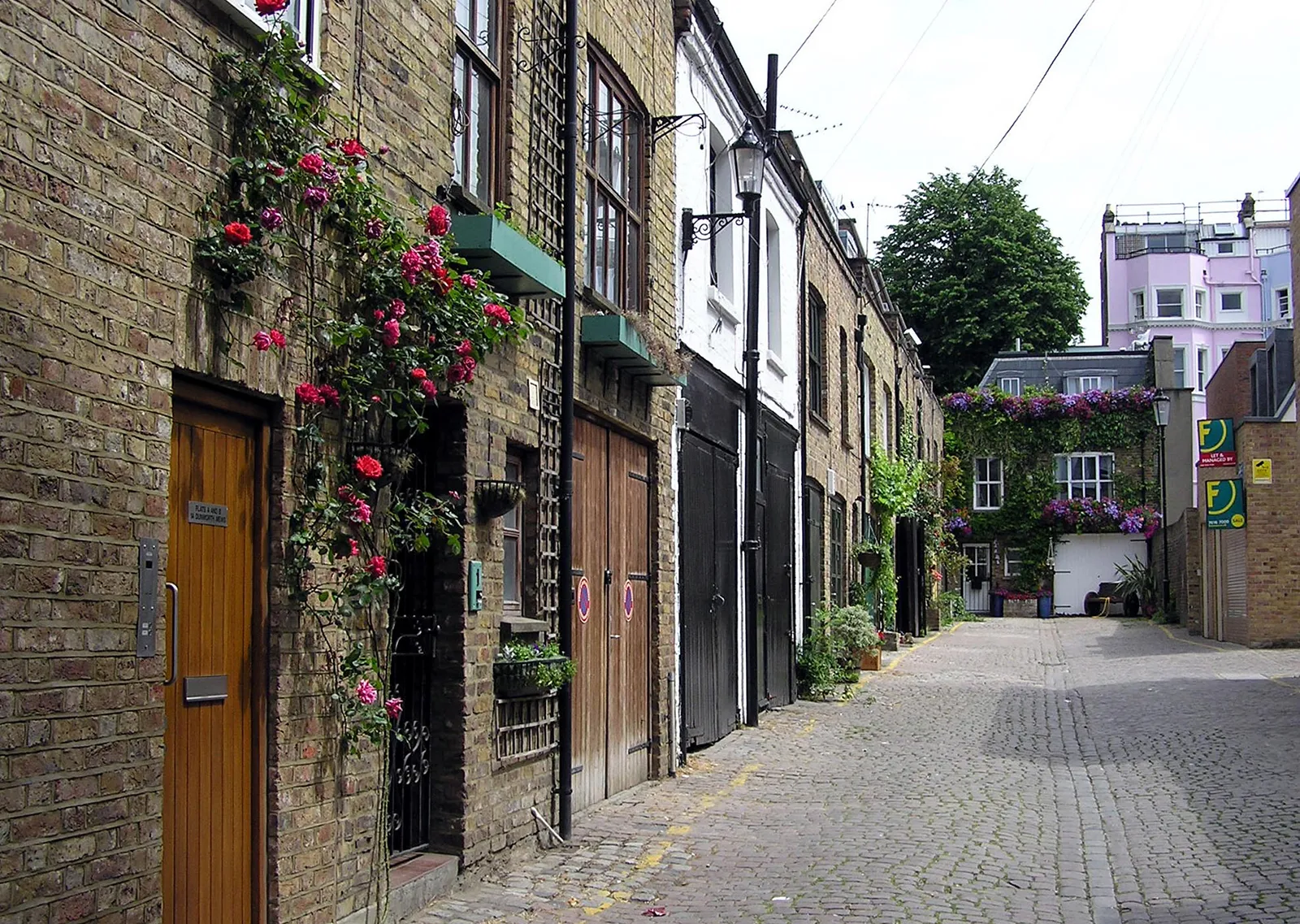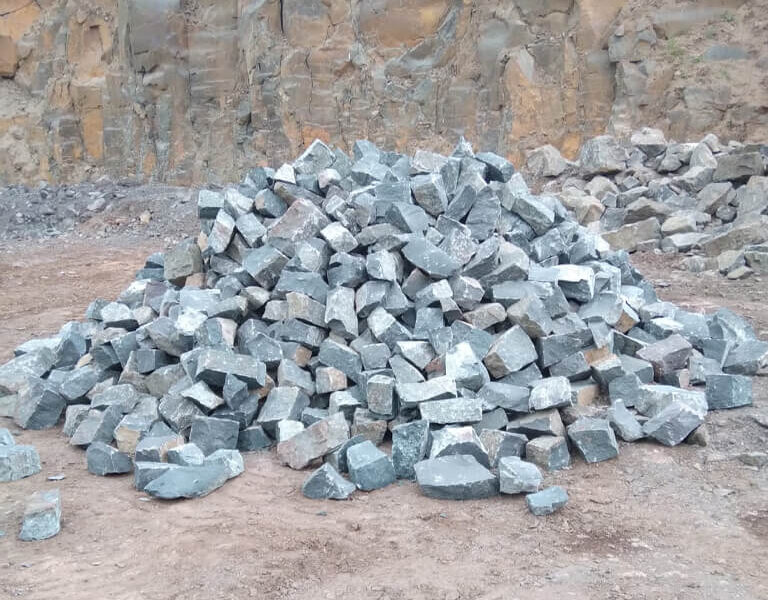A mews house is a special type of home mainly found in the United Kingdom, dating back to the 18th century. Originally, they served as stables or coach houses for the elite class in London during the Georgian and Victorian periods.
These properties have been transformed into private residences with distinctive features such as high ceilings, large windows, and outdoor spaces like gardens or courtyards. Traditional architectural elements like gabled roofs and red brick facades add to their charm.
They are Situated in quiet lanes or cobbled courtyards, mews houses offer a blend of city convenience and serene living. Today, they boast modern interiors while retaining their historical allure, making them sought-after by homeowners seeking unique homes.
Why is it called a mews?
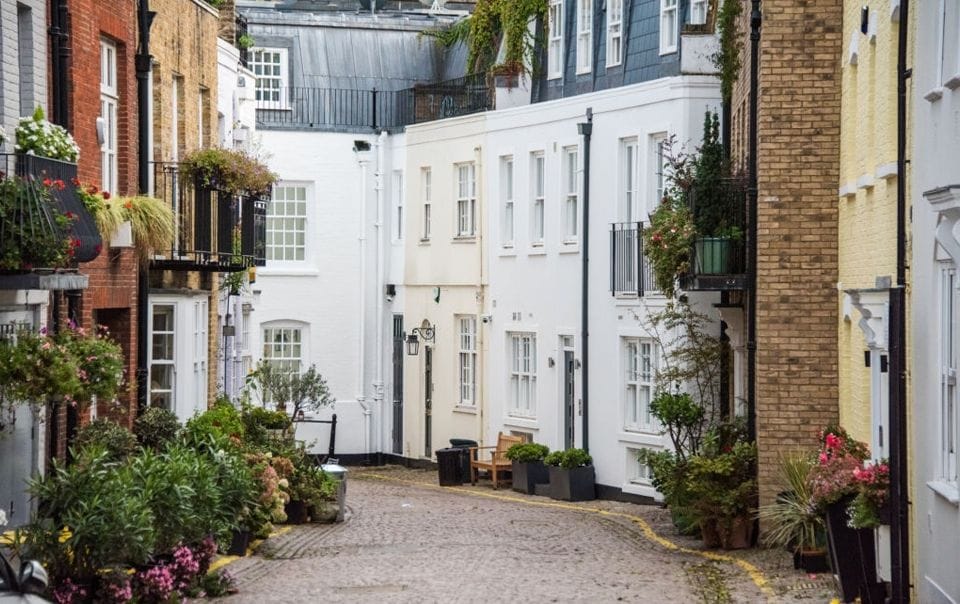
The term “mews” originates from the practice of falconry in medieval times, where falcons and hawks were kept in buildings called “mews.”
Over time, the term evolved to refer to the rows of buildings where falcons were kept and later expanded to include the stables or coach houses for horses and carriages in urban areas.
Thus, “mews” became synonymous with these types of buildings, leading to the term “mews house” for the residential dwellings that replaced them.
What are the Characteristics of a Mews House?
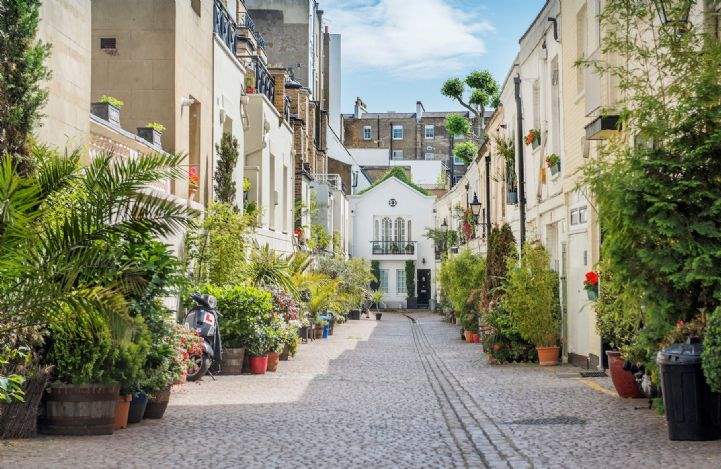
A mews house has unique features like sloped roofs and red brick walls. They often have open layouts and outdoor spaces, making them cozy and charming homes. Let’s have a look at these
Architectural Features
Mews houses are known for their distinctive architectural elements, which reflect their historical origins and add to their aesthetic appeal. Common architectural features of mews houses include
- Gabled Roofs: Mews houses often feature sloped roofs with gables, which contribute to their quaint and picturesque appearance.
- Red Brick Facades: Many mews houses are constructed using red bricks, a traditional building material that gives them a warm and inviting look.
- White Window Frames: Traditional mews houses typically have white window frames, providing contrast against the red brickwork and enhancing their visual appeal.
- Intricate Stone Detailing: Some mews houses boast intricate stone detailing around doorways, windows, or other architectural elements, showcasing craftsmanship and historical significance.
Typical Layout and Design
The layout and design of mews houses vary, but they often share common characteristics that make them unique and desirable homes. Typical features of mews house layouts include
- Multi-Story Design: Mews houses are typically two or three stories tall, maximizing living space within a compact footprint.
- Open-Plan Living: Many mews houses feature open-plan layouts, with interconnected living spaces that flow seamlessly from one area to another. This design creates a sense of spaciousness and flexibility, ideal for modern living.
- Outdoor Areas: Mews houses often include outdoor spaces such as gardens, courtyards, or balconies, providing residents with opportunities for outdoor relaxation and enjoyment.
- High Ceilings: Mews houses may have high ceilings, which enhance the feeling of space and airiness within the home.
- Large Windows: To maximize natural light and ventilation, mews houses often feature large windows that allow plenty of sunlight to filter into the interior spaces.
What are the benefits of residing in a mews house?
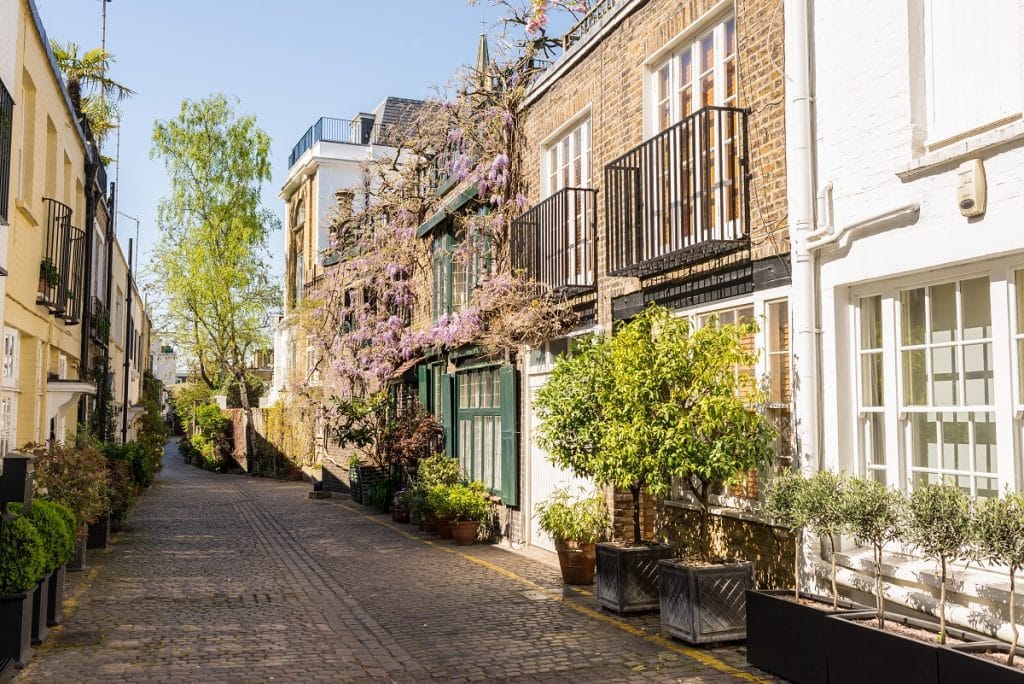
Living in a mews house is special. You get to enjoy beautiful surroundings and peace. Moreover, you’re close to city facilities and have bright, roomy interiors with lots of sunlight. Let’s find out the benefits of living there
Unique Charm
Mews houses exude a unique charm and character that sets them apart from conventional residential properties. Their historical significance, distinctive architectural features, and picturesque settings contribute to their appeal. People who live in mews houses love their homes’ stories, each one having its own special character and appeal.
Privacy
One of the key benefits of residing in a mews house is the sense of privacy it offers. These homes offer residents a peaceful escape from the busy city life. Unlike houses on bustling streets, mews houses provide a serene and secluded atmosphere where residents can enjoy privacy and quietness.
Outdoor Space
Many mews houses come with private outdoor spaces such as gardens, courtyards, or terraces.
These outdoor areas provide residents with valuable additional living space where they can relax, entertain guests, or indulge in gardening activities.
Having outdoor space improves the living experience, letting residents enjoy indoor-outdoor living right in the city center.
Central Location
Mews houses are often located in prime urban locations, offering residents convenient access to a wide range of amenities, including shops, restaurants, cafes, and cultural attractions.
Living in a mews house means being within walking distance of everything the city has to offer, from parks and green spaces to public transportation hubs and major landmarks.
This central location makes mews houses an ideal choice for those who value convenience and connectivity.
Characterful Interiors
Inside, mews houses boast spacious and inviting living spaces characterized by high ceilings, large windows, and open-plan layouts.
These features create bright and airy interiors filled with natural light, making the most of the available space.
Mews houses often retain original architectural details such as exposed brickwork, wooden beams, or wrought iron fixtures, adding to the character and charm of the interiors.
Sense of Community
Residents of mews houses often form tight-knit communities, sharing a sense of camaraderie and neighborly connection. People living near each other in mews houses build a strong community.
They help each other and plan social events and neighborhood activities together.s. This sense of community adds to the overall appeal of residing in a mews house, creating a welcoming and inclusive living environment.
Are Mews House expensive?
Yes, mews houses tend to be pricey! They’re popular because they’re close to city centers, look cozy, and have charming narrow streets. Because of their history and great locations, mews houses can cost more than similar-sized properties.
Mews House prices in East London have skyrocketed in recent years, which are often valued in the millions. After analyzing recent listings, we found that the average value of London mews properties is at least £1.3 million.
However, prices can change a lot based on condition, where they are, and how the property market is doing. Remember, while mews houses are lovely, they might not be an option if you’re buying your first home or have a tight budget.
FAQ
What is the purpose of a mews?
Originally, mews houses were built to house horses, with rooms above for servants. They had stables and space for carriages on the ground floor, while the upper floors had rooms for the coach driver and helpers. Nowadays, mews houses are transformed into sought-after homes, combining old charm with modern comfort. They provide a unique living experience in quiet, often cobblestone streets.
Are mews houses desirable?
Yes, mews houses are highly desirable! People love them for their mix of history, charm, and exclusivity. Nestled in picturesque streets, they offer peace in the midst of city life. Many residents enjoy their cobblestone lanes, unique architecture, and tight-knit communities. London has many of these charming streets with individual homes.
What is a modern mews house?
A modern mews house is a modernized version of its original purpose. Once stables and carriage houses, these homes now come with modern comforts and amenities. They range from cozy one-bedroom homes to spacious multi-story residences, blending old features with modern living. They continue to attract homeowners looking for a unique urban lifestyle.
What is the full meaning of mews?
The term “mews” has a fascinating history. It comes from the French word “muer,” meaning to shed or molt. In the past, mews houses were used to shelter royal hawks during molting season. Over time, they turned into homes, keeping their charming architecture. Today, mews refers to lovely streets with buildings that used to be stables but are now houses.
Final thoughts
A mews house is a special and charming home with roots tracing back to the 18th century. Initially built as stables or coach houses, mews houses have transformed into sought-after residences with unique architectural elements and updated conveniences.
Their mix of historic allure, central positioning, and functional living areas makes them attractive choices for individuals looking for a distinctive home in city settings.

